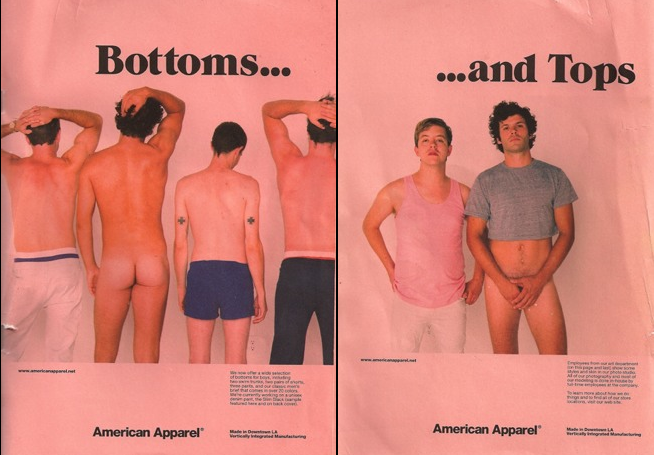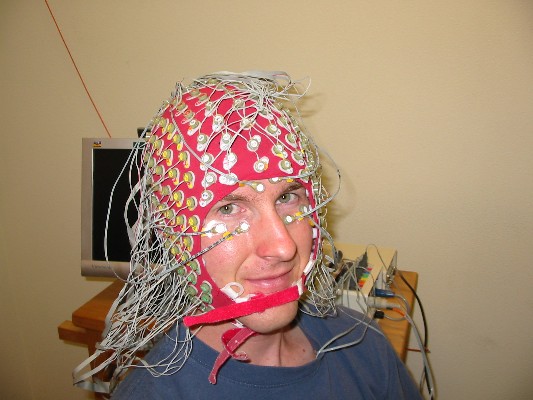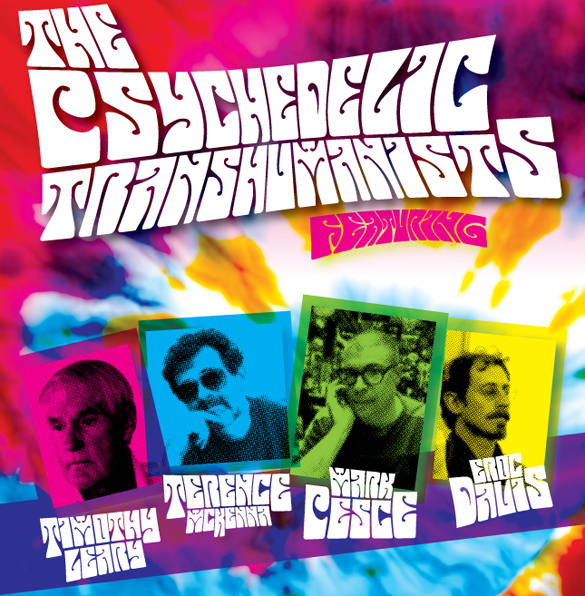Its a lot of money to spend on delectable gourmet bugs even if well spiced and cooked to your instructions. Insects are not considered a scarce or endangered commodity. But, maybe quenching our pangs of hunger by integrating them in our diet is something, deep down, we really, really want to do at a primal level, but are too timid to admit it to our inner me. Brainwave testing and neuromarketing backed by multinational consumer product companies may yet convince us of this and other spare change vacuum cleaning ideas. Whether the form is choosing a soccer jersey, clicking on a Google ad or swallowing a steamed scorpion …

"For two years, Campbell researchers studied microscopic changes in skin moisture, heart rate and other biometrics to see how consumers react to everything from pictures of bowls of soup to logo design. This "neuromarketing" approach is a fresh attempt among consumer-good companies to understand how consumers really respond to marketing and advertising. Technological advances have made the research cheaper and faster, making it accessible to more companies. Scientists also better understand how near-instant brain and body responses relate to how people generate meaning from new information, says Robert Barocci, president of the Advertising Research Foundation." Ilan Brat WSJ
“SOMETHING happened when Kisha Moorehead looked into the bowl of live worms. She was midway through a five-course Mexican feast at the Brooklyn Kitchen in Williamsburg last Saturday night, a meal engineered to introduce New Yorkers to the succulent wonders of edible insects. Throughout the first couple of courses (yucca frites dotted with mealworms, a smoked corn custard sprinkled with crispy moth larvae), Ms. Moorehead’s response had been muted. Earlier that evening, in fact, out on the sidewalk, she and her date, Harold Bradley, had considered fleeing the event altogether, even though they’d spent $85 each”…

"One research finding was unexpected—that the human brain perceives strong brands in almost the same way it perceives strong religions–with the same passionate loyalty. In a fast-moving, unpreditable world, humans cling to things that make them feel in control. Rituals fulfill that need; they’re familiar and stable. They give us a sense of belonging, and have even been shown to have a positive effect on emotional health. Lindstrom cites examples of consumer brands that have built in rituals that make them stickier than other brands (a lime wedge in the neck of a Corona bottle; the slow pour of a Guinness, etc.)"
But how do we measure the strength of that desire and can want be shaped and formed? The enduring allure of neuroscience is that it can measure our responses to stimuli at the level of our reptilian brains. This means it can figure out our actual responses rather than the ones we give to people running a focus group, or in other words what we say and what we really think can be quite different. A.K. Pradeep and his book “The Buying Brain” conjures up all the nightmares that neuromarketing and brainwave measurement can possibly dish out with the credibility of a chain smoker selling heart foundation ribbons door to door.
Neuromarketing is a controversial old/new field of marketing which uses medical technologies such as functional Magnetic Resonance Imaging (fMRI) — not to heal, but to sell products.There are some big potential problems with neuromarketing: increased incidence of marketing-related diseases; more effective political propaganda; and, more effective promotion of degraded values.

"One area of focus within this book is the effectiveness of using sex within advertising and it’s ability to both imprint a brand within the consumers mind as well as its ability to sell a product. Lindstrom examines the history of sex in advertising from the 1960s up unto recent times. As can be seen, sex in advertising has grown increasingly more provocative with ad campaigns from both Calvin Klein and Abercrombie and Fitch, just to name a few. While its easy to identify sex within advertising, the main question that remains is how effective is sex in selling a product? One study conducted by MediaAnalyzer Software & Research found that while sexual advertisements may capture attention, overt sexuality has a tendency to distract the consumer from the actual brand or product. This finding was the result of a study in which four hundred participants were shown a variety of ads ranging from sexually explicit to very bland. This study found that the brand recall of the ads, which were sexual, was low in comparison to the ads that were very bland. This finding was coined the Vampire Effect, in that “the titillating content was sucking attention away from what the ad was actually trying to say”
Neuromarketing exploded into the mainstream over the last decade, fed both by wild claims of its potential and the intensifying interest among business people, academics, and lay people in the science of thought.Its also a “wild west” and unregulated field. It has struck many as shady and unethical, the contemporary version of the 1950s-era fear of subliminal advertising. There is also something unutterably melancholy, even appalling about harnessing the sum total of knowledge about the human brain; knowledge that would have made our ancestors swoon ; in order to design a more compelling toilet paper, chocolate bar or oral hygiene product. It was quickly attacked by consumer organizations and high-profile critics like Ralph Nader. An article in The Independent warned: “They don’t just want your money. They want your brain.” Many marketers refused to acknowledge they were engaging in the research. Effectively, a sizable shard of it is a continuation and logical extension of the work of Edgar Bernays and Nazi propaganda experiments.

"Rhys and Eggsy from the band Goldie Lookin' Chain continue their study of the science behind sport with the help of sports science experts from the University of Bath. Ryan Coombs, TeamBath performance analyst, demonstrates the Alpha-Active EEG (electroecenograph) monitoring device which detects brain wave patterns."
… “ But they stayed, and at some point during dinner a bowl of squirming wax moth larvae was passed around. Ms. Moorehead, 38, who most days can be found driving the morning G train, dived in. “They’re moving,” she said. “Oh, I want to try that. Oh! Oh!”
Suddenly almost trembling with excitement, she stuck her fingers into the bowl, grabbed a pale yell
orm, popped it into her mouth and munched down. She closed her eyes. She seemed to swoon. “I ain’t gonna do that,” Mr. Bradley said. “Just try one, please,” Ms. Moorehead said. “It tastes like raw corn,” a fellow diner, Alfredo Lamus, said from across the table. “Just try it,” Ms. Moorehead said gently. …

"As can be seen there is a variety of contradictory research that examines how consumers respond to sexual advertising. While some research findings suggest that this phenomenon is ineffective, the prevalence of sexual advertisements still remains. Today, retailers such as American Apparel and Diesel Jeans have joined the sex craze in hopes to reach consumers at both a superficial and psychological depth. "
“Neuromarketing is the practice of using technology to measure brain activity in consumer subjects in order to inform the development of products and communications–really to inform the brand’s 4Ps. The premise is that consumer buying decisions are made in split seconds in the subconscious, emotional part of the brain and that by understanding what we like, don’t like, want, fear, are bored by, etc. as indicated by our brain’s reactions to brand stimuli, marketers can design products and communications to better meet “unmet” market needs, connect and drive “the buy”. It is commonly accepted that traditional market research is flawed because consumers don’t know, can’t articulate, or will even lie in a focus group about their purchase motivations. Neuromarketing research removes subjectivity and ambiguity by going right to measuring observable brain behavior. ”

"I would love to have Martin Lindstrom analyze this with his “NeuroMarketing” research technique — using hightech brain scanning techniques, such as fMRI and EEG, to investigate brain activity. Through extensive research he has already concluded in his book “Buyology” that the “Marlboro Red” color triggers something in the brain that actually makes one want to smoke more. So does “Marlboro Man” himself trigger this same phenomena? If the theory is right, this would mean that these ads are actually genius…. in the sense that Soletin C actually makes one want to smoke more, hence increasing the long term sales of its product! Ethical? ….mmmmmm that’s a different story too complicate to argue here. Yet again Philip Morris is getting some good free “subliminal” (or not so subliminal) advertising."
The idea of the neuromarketers is to focus on small inexpensive products whose purchase people do not analyze in much depth. In the case of a big-ticket item,like a home or an RV, typically there’s a bit of modulation with reason. But, in the case of soda, or toothpaste, or a toothbrush, or a bag of chips, the amount of modulation by reason is relatively small. So the question is asked: How many times do I go out every day and buy things that require rational consideration? The answer is probably no more than several times a year, at best.. The rest of it, is in marketing jargon, “you like to think you think about it, but you don’t think about it.”
“…Mr. Bradley, a police officer, wedged one between his teeth, scrunched up his face, and flailed his arms around in what looked like a genuine spasm of repulsion. But Ms. Moorehead, who has such a potent phobia about the animal kingdom that she refuses even to pet dogs and cats — well, after having ingested that worm, it was clear that she had crossed a threshold. She beamed like someone who had just walked barefoot over hot coals. “I’m so glad I did it,” she said. “Because that’s why I came here. I overcame something. If I can do this, I can do anything.” …

"For the 2008 Clio Awards Television/Cinema/Digital and Interactive categories, Sands Research will have a live subject demonstration set-up at the Clio Festival. A subject will be exposed to the finalists’ advertisements while wearing a cap with electrodes linked to electroencephalography (EEG) equipment. Brain activity will be measured and recorded in millisecond increments to determine which ads elicit the strongest response. Festival attendees can view all testing in real-time during the event.”
The fear of neuroscience in the service of Wall Street was fed in part by talk of the “buy button” in the brain that people surmised could be unethically manipulated; which scientifically does not exist as a singular entity. All the brain has are interconnected networks, and the networks amplify things. Some signals die away, but when things appeal to different parts of the brain, there’s amplification, and there’s resonance, and then the brain is very engaged, and things like hormones can run off the tracks. It may result in a purchase behaviour. When you find the place where you are implicitly and subconsciously connecting to the brand, and the network and the ad, they all continuously resonate, and one plus one becomes ten and not two. Which all means there are many “buy buttons” as the marketer attempts to create a series of metaphorical multiple orgasms in the shopper.

Treehugger:It turns out that encouraging a diet of insects and other creepy-crawlies could also be a great way to feed the world. News comes via The Guardian that insects could be the key to meeting global food demand, and that a proposal on the eating of insects is being seriously considered by the UN Food and Agriculture Organization: "There is a meat crisis," he said. "The world population will grow from six billion now to nine billion by 2050 and we know people are consuming more meat. Twenty years ago the average was 20kg, it is now 50kg, and will be 80kg in 20 years. If we continue like this we will need another Earth."
Neuromarketing, like potential frozen bug prepared meals, has begun to crawl out of the shadows.In part because of the dismal economic conditions forcing marketers to develop more sophisticated approaches to separate the consumer from money to buy something they don’t really need syndrome. The global research giant Nielsen invested in NeuroFocus; as companies that included Microsoft and Frito Lay admitted to doing ongoing neuroscience research. Last year, the brand consultant Martin Lindstrom had a minor bestseller with his neuromarketing book “Buyology” and was named to Time magazine’s Top 100 most influential people. Over the summer, the communications agency Millward Brown said it had established a neuroscience practice. And earlier this month, the British journal New Scientist announced it had used NeuroFocus to test three different covers for a recent issue before settling on the one it published, resulting in what it said was a twelve-per-cent increase in sales over the same week’s issue from last year.

"In Managing by Mistakes, I wrote about the power of learning from mistakes. Some of the most successful individuals in different fields credit relentless focus on even small mistakes with their high achievement. Researchers at Columbia University divided student subjects into two groups, “grade hungry” and “knowledge hungry” based on a short survey, reports Newsweek’s NurtureShock column, and then tested them with general knowledge questions. The researchers immediately provided feedback as to whether the subject was right or wrong, and showed the correct answer. The brain activity of the subjects was monitored using EEG caps. The differences in the way the subjects handled the feedback was striking..."
“…Phil Ross, the San Francisco-based chef and artist who put together this and other insect smorgasbords, said he sees that kind of reaction all the time. “People barely need help over the hump,” he said. “As soon as they taste them and they realize that the flavor is actually really good, all the other stuff just goes out the window very fast, and a whole lot of other things start entering. Transgression of one taboo leads to all kinds of other possibilities.”
Mr. Ross is wiry and intense and comes across like a 44-year-old version of Ferris Bueller — if “Ferris Bueller’s Day Off” had been directed by, say, David Lynch. (Mr. Ross describes himself as the kind of guy who “gets a pizza with cockroaches on it — intentionally.”) He raises many of the worms in his San Francisco apartment.His girlfriend, the artist Monica Martinez, builds miniature Bauhaus-style cottages and apartment complexes, and the bugs live rent-free. (These whimsical structures are on display until Oct. 15 at the EyeLevel BQE exhibition space, right around the corner from the Brooklyn Kitchen.)…”

"Among the ranks of these “psychedelic transhumanists” are legendary rebels like Timothy Leary, wise fools like Terence McKenna, cultural commentators like Erik Davis and Mark Pesce and avantpsychopharmacologists like David Pearce. Hailing from disparate knowledge domains, they all share a hyperliterate intelligence that is, in its own way, rigorous. Their arguments are not necessarily subject to the conventional scientific method, but they are not so easily refuted. Their common vision shares much with the rest of the transhuman community, including an embrace of technology and science as both potent and inevitable; an evolutionary model of the universe and humanity; a sense of the human organism as something that can be tinkered with and expanded; a recognition of drugs as a technology that can dramatically reinvent identity, and a playful challenging of fixed boundaries. In many ways they demonstrate the seed of transhumanism in this moment by exemplifying self-revision and the reevaluation of assumptions as an open ended and ongoing process. And along the way, they tatter the mechanistic control fantasies we have held onto in spite of our most sophisticated inquiries. Among these visionaries, we find a general agreement on the emergence of machine intelligence, but from a less dualistic perspective than most in the transhuman sphere — leaning towards a deeper and more balanced recognition of both inner and outer realities. They tend to critique philosophies that consider mind a mere epiphenomenon, or that fail to recognize the role of the speculator in speculation."
If Neuromarketing has evoked fears bordering on science fiction of the 1950′s , the mostly likely candidate for a consumer marketing nightmare and backlash, or flashback, would be in Don Siegel’s “Invasion of the Body Snatchers” , the Sci-Fi epic about humans taken over by giant seed pods from outer space. The meaning of the film has always been ambiguous. Lead Kevin McCarthy said ” People began to think of McCarthyism later. I thought it was really about the onset of a kind of life where the corporate people are trying to tell you how to live, what to do, how to behave.”

Invasion of the Body Snatchers. "Madison Avenue is increasingly turning to neuroscience to refine the art of crafting successful ad campaigns. The Nielsen Co. jumped into the field earlier this year by investing in Berkeley, Calif.-based research firm NeuroFocus, which applies neuroscience to advertising research. Now Google is applying “neuromarketing” to video advertising. In a study released Thursday, Google and MediaVest used NeuroFocus findings to show that overlay ads appearing in YouTube videos grab consumers’ attention and boost brand awareness. YouTube-owner Google has championed overlay ads--which appear in the lower third of video screens--as a less intrusive alternative to pre-roll ads. But the format has failed to gain much traction with advertisers, and earlier this month Google announced it would begin running pre-, mid- and post-roll ads with the launch of full-length videos on YouTube."
Based on a magazine serial by Jack Finney, the movie takes place in the fictional town of Santa Mira, California, where Miles has just returned from a medical convention. He begins to learn from his patients that some of their relatives have changed. They act strange and show no emotion.
At first Miles attributes the changes to mass hysteria but soon discovers to his horror that their bodies have been duplicated by giant seed pods while they were sleeping. As Miles and his love interest, Becky, played by Dana Wynter, try to flee and stay awake, they are pursued by the alien impostors. The original ending of the film had McCarthy on a highway banging on car windows and yelling: “Look, you fools. You’re in danger. Can’t you see? They’re after you. They’re after all of us. Our wives, our children, everyone.” Then, looking into the camera in an extreme close-up, he shouts: “They’re already here. You’re next!”
a
ADDENDUM: “In my opinion, the crucial issue for Horkheimer, as well as for Adorno and Benjamin – unlike Marcuse – is that this technological society is nothing but a particular historical expression of an element situated at the basis of Being in general. For Adorno “space is nothing but absolute alienation”. This is the basis for the whole historical reality of the advanced technological society, in which everything has become “consumption” and life with all its layers and dimensions is nothing but a ‘fetish of consumption”. Benjamin did not hesitate to designate “the totality” of “modernity” using a distinct name: “hell.” Hell returns, again and again, in each innovation, and surely this totality reflects the “eternity of hell upon earth”.
Both the Judeo-Christian tradition of religious redemption and the tradition of utopianism needed the idea of “progress” as well as the optimistic historical conscience in general. From the prophets of Israel to Rabbi Cook, from St. Augustine to Hegel and Marx, the idea of progress ensured confidence in the possibility of redemption, or in the realization of the future utopia. Even facing the horrors of life, the individual may have tied his fate to a project beyond individuality, providing meaning and purpose to the joy and pain in his life; and allowing the union of him with his fellow-man, of the present with the past and with the future – if not in reality at least as an idea. In the quest for social revolution positive utopianism demanded the idea of human progress in history. This idea was a re-endorsement of the conception of religious redemption, whose maximalist version emphasized precisely the idea of the leap beyond the horizon of history. In the first phase, Horkheimer’s position is simply the development of Kantian utopianism, claiming that “man’s principle of morality never extinguishes, and reason does grow permanently by means of ever advancing culture”.

Klee. Angelus Novus. "Four aspects characterize Benjamin's position. First, paradise is the origin of man, and it is also utopian vision of his future redemption. Secondly, there is actually no real progress, and the angel does not deviate from this course of "one continuos disaster." Thirdly, genesis implicitly included its final goal: creation, or paradise, already contained the seed of disturbance. Fourthly, all this does not imply that there is no room for redemption, but only that redemption has to appear "from the outside" as the interruption of history, and it does not take an imminent part in history."
In his latter work, many years after Benjamin, Horkheimer presented the thesis contradictory both to Kant’s and to the enlightenment’s basic position, as well as to the whole humanist tradition which demanded revolution and hoped for it relying on such a conception of progress. Now he claimed that “progress” was nothing more than a vicious circle of horror. In Benjamin’s “Theses on the Philosophy of History” such pessimism was expressed in the image of “the angel of history”: “There is a picture by Klee, which is called Angelus Novus. An angel is represented in it, who looks as if he was about to move away from something at which he is staring. His eyes are widely open, his mouth is open and his wings are relaxed. Thus the angel of history should appear. He has turned his eyes towards the past. Where to us a chain of events seems to appear, he sees a single catastrophe, piling up continuously ruins upon ruins, and casting them in front of his feet. He might want to remain, to awake the dead and to reassemble what was shattered. But a storm moves in from paradise, which has entangled itself into his wings, and which is so strong that the angel cannot close them anymore. Unrestrained this storm pushes him into the future to which he turns his back, while the piles of ruins in front of him grow up to heaven. What we call progress is this storm.








 COMMENTS
COMMENTS



